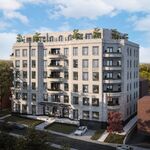"Because it's really hard to design a freeway that would look good in a city."
I Totally disagree on that point. If anybody here travels outside of Toronto, then you KNOW for a fact that there are many cities that build excellent
freeway thoroughfares that look VERY good...
And i think in Toronto, we have very good Suburban Freeways comparing to the ones in the United States, or worse...Quebec! We tend to use much much much less concrete pillars for our freeways and much more berms/hills for our approaches. The Best example of a well landscaped and beautiful freeway in Toronto is the 407 as it has a 4-level stack with highway 400 and yet it looks far more pleasant than the stacks they have in USA...it actually looks very nice!
[407 - large area, nice landscaping and aesthetics]
[I-35 Houston - smaller area, all concrete, no green]
In terms of Urban Freeways, the GTA is virtually a total fail (partly because the urban freeways are built by the city of toronto...which copies the ugly designs of USA) but the biggest project to look forward to in Ontario is the Windsor-Essex Parkway under construction to connect 401 to the new Detroit River Crossing...that will show if MTO can truly build an urban freeway to the same aesthetic standards as their suburban ones...lets keep our fingers crossed...
If anyone wants an example of a beautiful/aesthetically pleasing urban freeway (which is adjacent to an up and coming dense, gentrifying neighbourhood), look no further than Central Expressway {US-75}
[All Images taken from texasfreeway.com]
The last 2 images are of the service roads that are parallel to the freeway. Notice how you cannot even see a freeway from ground level? The
landscaping and design features ensure that pedestrians do not even notice that a freeway is running below in a trench...












